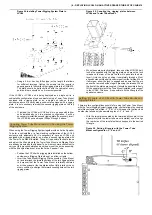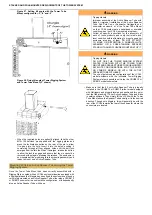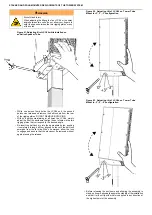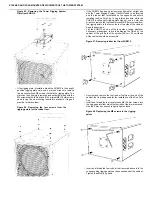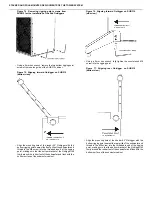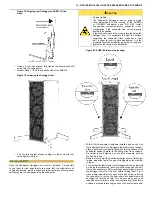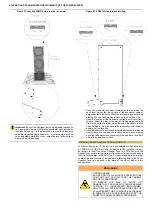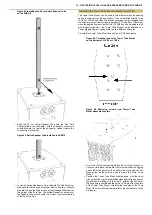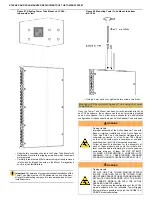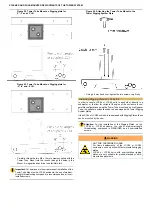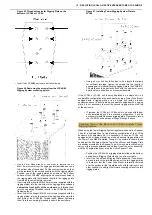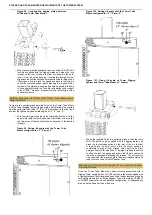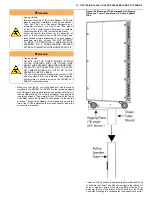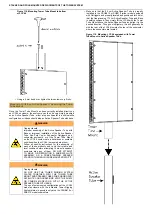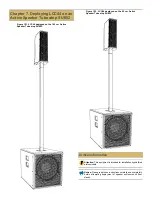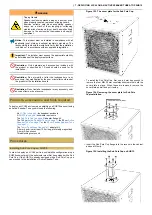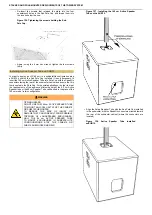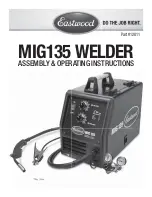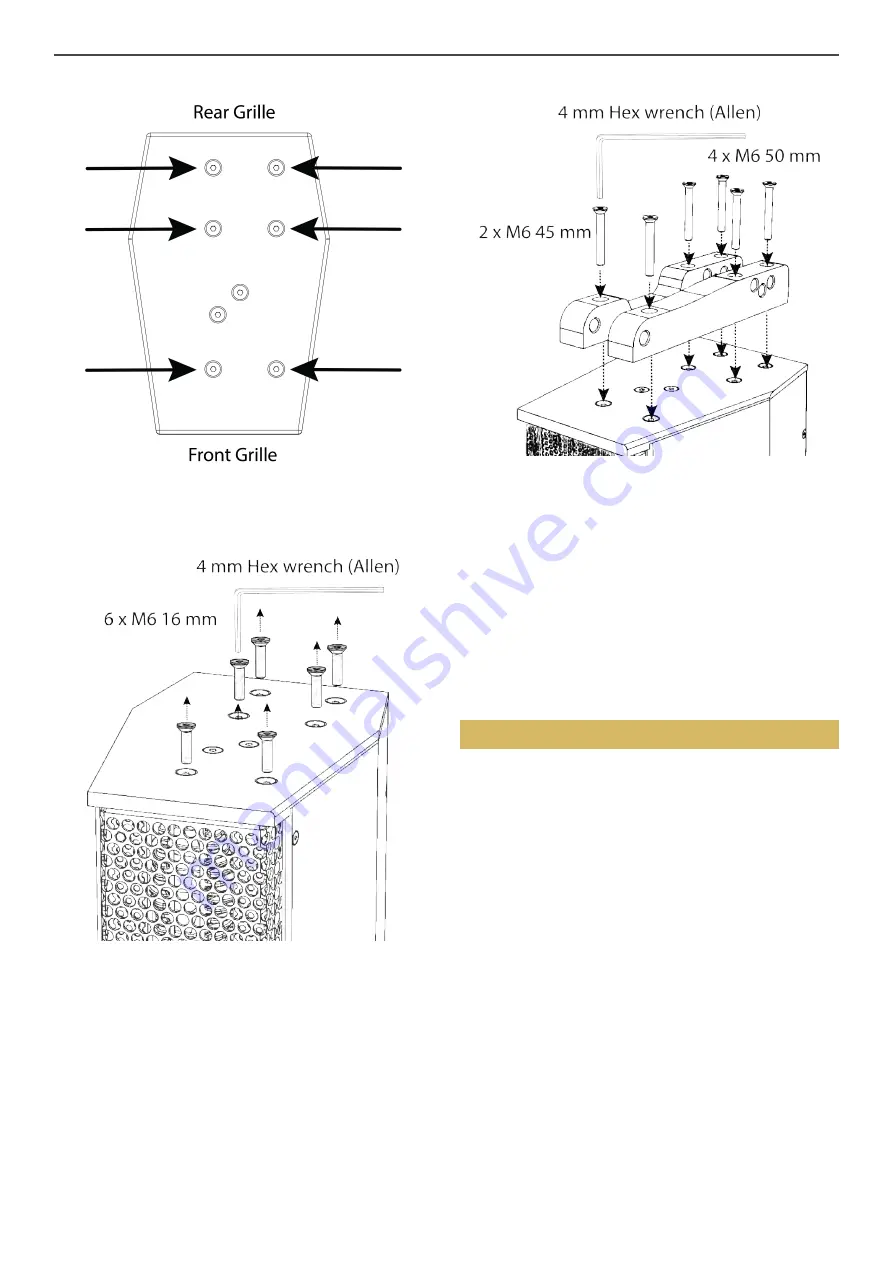
| 5 - DEPLOYING LCC44 ON ACTIVE SPEAKER TUBE ATOP SUB310
Figure 95. Threaded inserts for Rigging Plate on the
bottom of LCC44 or LCC84.
•
Invert the LCC44/84 enclosure, bottom-side-up.
Figure 96. Removing the screws from the LCC44/84
Rigging System mounting points.
•
Use a 4 mm Allen wrench or hex driver to remove the six
M6×16 mm screws from the rigging points indicated above on
the bottom side of the cabinet. Put these screws aside, as they
will be replaced by the screws supplied with the rigging plates.
•
Position one of the rigging plates as shown on the bottom
surface of the LCC44/84, aligning the six countersunk holes in
the rigging plate with the threaded inserts in the rigging points
from which the screws were removed.
•
Insert two of the (shorter) M6×45 mm screws (supplied with the
rigging plates) into the two holes in the rigging plate positioned
nearest the front grille of the enclosure, and thread them
into the underlying threaded inserts in the LCC44/84 without
tightening them.
•
Insert four of the (longer) M6×50 mm screws (supplied with the
rigging plates) into the four holes in the rigging plate nearer the
rear grille of the LCC44/84. Thread these, without tightening
them, into the underlying threaded inserts in the enclosure.
Figure 97. Installing Tower Rigging System Plate to
LCC44
•
Using a 4 mm hex key (Allen type) with a length that allows
for sufficient leverage, tighten the screws into the inserts in
opposing pairs to firmly attach the rigging plate to the CSUB610.
The plate should be perfectly flush with the cabinet at every
point and there should be no movement possible.
If the LCC44 or LCC84 unit is being deployed as a single unit in a
sub/satellite configuration atop a subwoofer using a Tower Tube Mount
equipped with a rigging plate, or as a single unit (with no further
enclosures above it) directly atop a subwoofer equipped with a rigging
plate, it is not necessary to mount the second rigging plate on the top
of the enclosure.
•
If, instead, the LCC44 or LCC84 unit is to be used with further
units installed above it in a stacked configuration, it will be
necessary to install the second rigging plate. If necessary, invert
the LCC44/84 unit and repeat Steps 2 though 6 above.
Coupling Tower Tube Mount and LCC44 using the Tower
Rigging System
When using the Tower Rigging System together with an Active Speaker
Tube for a sub/satellite or a free-standing configuration of the LCC44
enclosure with adjustable tilt, it is necessary to have an LCC44 unit
equipped with a rigging plate(s), as well as a second rigging plate with
the Tower Tube Mount installed. Though it is possible to couple these
and adjust the tilt angle while the Tower Tube Mount and Rigging Plate
are already mounted on the Speaker Tube, it is much more convenient to
carry out this process beforehand and then mount the entire assembly,
with the tilt angle already set, atop the Active Speaker Tube.
•
Position the LCC44 with a rigging plate installed on the bottom,
upside-down (Rigging Plate side up) on a floor or table.
•
Invert the Tube Mount+Rigging Plate assembly (Tube Mount
up) and interlock the forward sections of the two rigging plates
in a manner that the Tower Tube Mount is laterally centered
over the enclosure (the two plates will not fully interlock in any
other condition), and align the forward coupling holes of the two
rigging plates.

